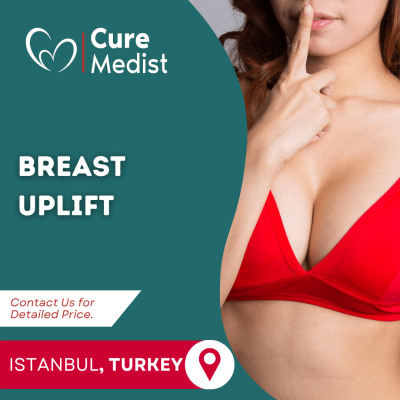Breast lift, also known as mastopexy, is a surgical procedure designed to raise and firm the breasts by removing excess skin and tightening the surrounding tissue to reshape and support the new breast contour. Here’s an in-depth look at breast lifting:
What is a Breast Lift?
A breast lift is a cosmetic surgery aimed at addressing sagging or drooping breasts (ptosis) to create a more youthful and elevated breast profile. This procedure does not significantly change the size of the breasts but can be combined with breast augmentation or reduction if desired.
Indications for a Breast Lift:
- Sagging Breasts: Caused by aging, gravity, pregnancy, breastfeeding, weight fluctuations, or genetics.
- Nipple Repositioning: Nipples that point downward or sit below the breast crease.
- Asymmetry: Uneven breasts in shape or position.
- Loss of Volume and Shape: Breasts that have lost firmness and elasticity.
Procedure:
- Initial Consultation:
- Assessment: The surgeon evaluates the patient’s breast shape, skin quality, and degree of sagging. Measurements and photographs may be taken for medical records.
- Discussion: The patient discusses their goals and expectations, and the surgeon explains the available techniques and potential outcomes.
- Pre-Operative Preparations:
- Anesthesia: The procedure is typically performed under general anesthesia.
- Incision Options: The choice of incision depends on the amount of excess skin, the position of the nipples, and the patient’s goals. Common techniques include:
- Periareolar Incision: Around the edge of the areola.
- Vertical Incision: Around the areola and vertically down to the breast crease (lollipop incision).
- Inverted T Incision: Around the areola, vertically down to the breast crease, and along the breast crease (anchor incision).
- Surgical Steps:
- Reshaping and Lifting: The surgeon removes excess skin and reshapes the breast tissue to create a firmer and more uplifted contour.
- Nipple Repositioning: The nipples and areolas are repositioned to a higher, more youthful location. In some cases, the size of the areolas may be reduced.
- Closing Incisions: The incisions are closed with sutures, skin adhesives, or surgical tape. Drainage tubes may be placed temporarily to remove excess fluids.
Recovery:
- Immediate Post-Operative Care:
- Monitoring: The patient is monitored in a recovery area until they are stable enough to go home.
- Dressings and Support: Bandages and a surgical support bra are applied to minimize swelling and support the breasts during healing.
- Short-Term Recovery:
- Pain Management: Pain and discomfort are managed with prescribed medications.
- Activity Restrictions: Patients are advised to rest and avoid strenuous activities, heavy lifting, and raising their arms above their head for several weeks.
- Follow-Up Appointments: Regular check-ups are scheduled to monitor healing, remove sutures, and address any concerns.
- Long-Term Recovery:
- Swelling and Bruising: These typically subside over a few weeks.
- Scar Management: Scars will fade over time but may take several months to a year to fully mature. Scar treatments and silicone sheets may be recommended.
- Final Results: The final shape and position of the breasts may not be fully apparent until several months after surgery.
Benefits:
- Youthful Appearance: Lifts and firms sagging breasts, providing a more youthful and aesthetically pleasing breast contour.
- Improved Self-Confidence: Enhanced breast appearance can improve body image and self-esteem.
- Clothing Fit: Improved breast shape and position can enhance the fit and appearance of clothing and swimwear.
Suitability:
- Good Candidates: Individuals in good overall health with realistic expectations. Ideal candidates are those with sagging breasts but relatively stable breast size.
- Non-Smokers: Smoking can impair healing and increase the risk of complications.
- Stable Weight: Significant weight fluctuations can affect the results of the surgery.
Combining Procedures:
- Breast Lift with Augmentation: Some patients choose to combine a breast lift with augmentation (implants) to enhance both the shape and size of the breasts.
- Breast Lift with Reduction: For those with overly large breasts, combining a lift with breast reduction can achieve a more proportionate size and lifted shape.
A breast lift can effectively rejuvenate the appearance of the breasts, providing a more lifted and youthful profile. It is important to consult with a qualified plastic surgeon to discuss individual goals, potential risks, and the best surgical approach for your needs.




